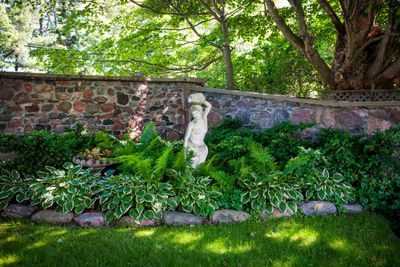No matter what your taste, there are plants for shade that can turn a once barren patch of dirt into a cool oasis that will quickly become one of your favorite places to sit and relax. Let’s take a look at some plant options for gardening in shade.
Flowering Shade Loving Plants
If colorful blooms are what you desire, there are a variety of flowers that can brighten almost any shady locale. Shade-loving annuals that pop and add seasonal color include:
Pansies Impatiens Forget-me-nots Begonias
For flowering plants with a little more permanence, perennials are some excellent choices. Try the following:
Azalea Bleeding heart Astilbe Phlox Primrose Lily-of-the-valley Foxglove Virginia bluebell Calla lily
With the right combination of flowering plants, your shady spot can be alive with color from early spring through the fall.
Shade Loving Foliage
For a woodsier feel, there are a number of foliage plants well suited for partial to full shade including:
Caladiums Coleus Hosta Pulmonaria Aspidistra Liriope Wild ginger English ivy Pachysandra Purple wintercreeper
In warmer climates, the foliage selection can take on a more tropical flare, encompassing plants that have evolved to grow under the dense rainforest canopy and which are usually seen as houseplants. Some of these tropical plants for shade will do well with little or no direct sunlight:
Ferns Peace lily Elephant ear Dieffenbachia Rubber plant Schefflera Golden pothos Philodendron
Shade Loving Shrubs
Finally, there are several types of shrubs and trees that will breathe life into a shady spot for years to come and require little care other than the occasional pruning once they are established. Some of the most popular shrubs for shady locations include:
Boxwood Hydrangea Mountain laurel Cherry laurel Privet Yew Rhododendron
Trees such as dogwood and Japanese maple also do very well under lower light conditions. The plants listed here don’t constitute a comprehensive list, but they are a few of the most popular shade lovers. And since no plant is suited to every environment, it’s important to do some research or talk to a garden professional at your local nursery to see which plants are best suited for your area and specific needs. With a little effort, that once darkened area could become the pride of your yard – and you thought gardening in shade would be difficult.
